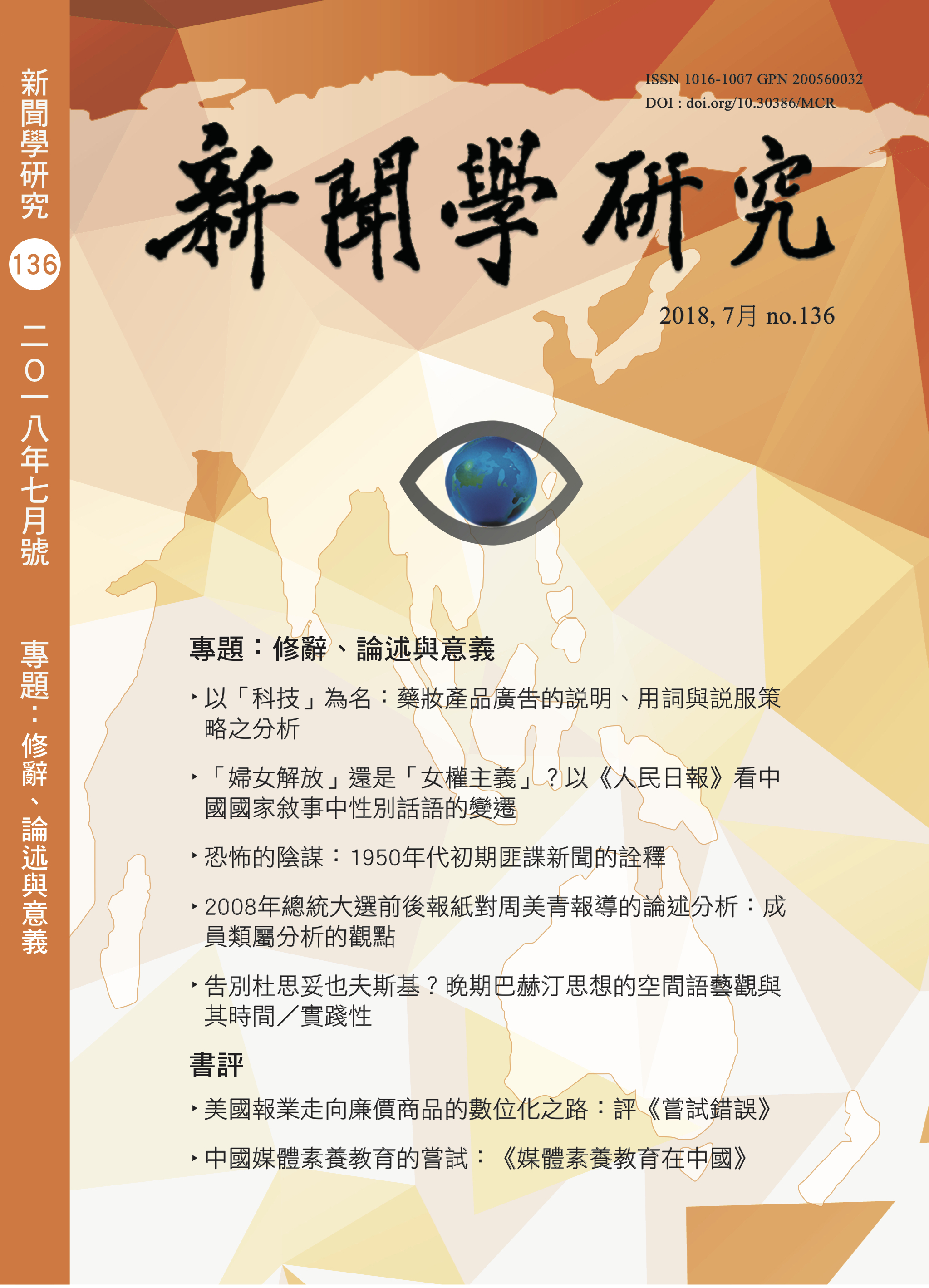前期出版
前期出版
頁數:91﹣134
恐怖的陰謀:1950年代初期匪諜新聞的詮釋
Terror of Conspiracy: The Interpretation of Communist Espionage News in the Early 1950s
研究論文
作者(中)
黃順星
作者(英)
Shun-Shing Huang
關鍵詞(中)
新聞學研究,政大
關鍵詞(英)
white terror, media ritual, media event, social drama, communist espionage
中文摘要
根據傳播的儀式觀,新聞不只是資訊,更是文化價值的展現。本文藉此觀點,以社會戲劇為方法,視匪諜新聞為整合社會秩序的媒介儀式,以此分析1950年代初期《中央日報》與《鈕司》週刊上的匪諜新聞,探究報導中如何構框匪諜,又從何種角度予以定調。本文發現在匪諜新聞中,不只將匪諜視為叛國者,更以傳統倫理價值批判,以簡化的善惡二元對立區分敵我。不但使反共復國的主張正當化,也使民眾對匪諜產生恐懼與疏離。不但使得恐怖與苦悶的時代氛圍成為揮之不去的夢魘,也阻礙後人認識歷史真相與想像不同未來的可能。
英文摘要
According to the communications ritual view, journalism provides more than merely information, as it also represents cultural values. Based on this view and utilizing social drama to view communist espionage news as media rituals affecting social orders, this article analyzes communist espionage news that appeared in Central Daily and News Weekly in the early 1950s, looking at how and from what angles communist espionage was framed. From those news articles, this article finds that communist spies were not only regarded as traitors, but also judged through the lense of traditional ethical values and differentiated as enemies by a simplified binary method of good and evil. The government legitimatized the anti-communism advocacy and led the citizenry to be fearful of and alienated from communist spies. The ambience of horror and depression became unerasable collective memories and nightmares of the people of that era, thus hindering later generations from recognizing the historical truth and expecting the possibility of a different future.
974次下載



